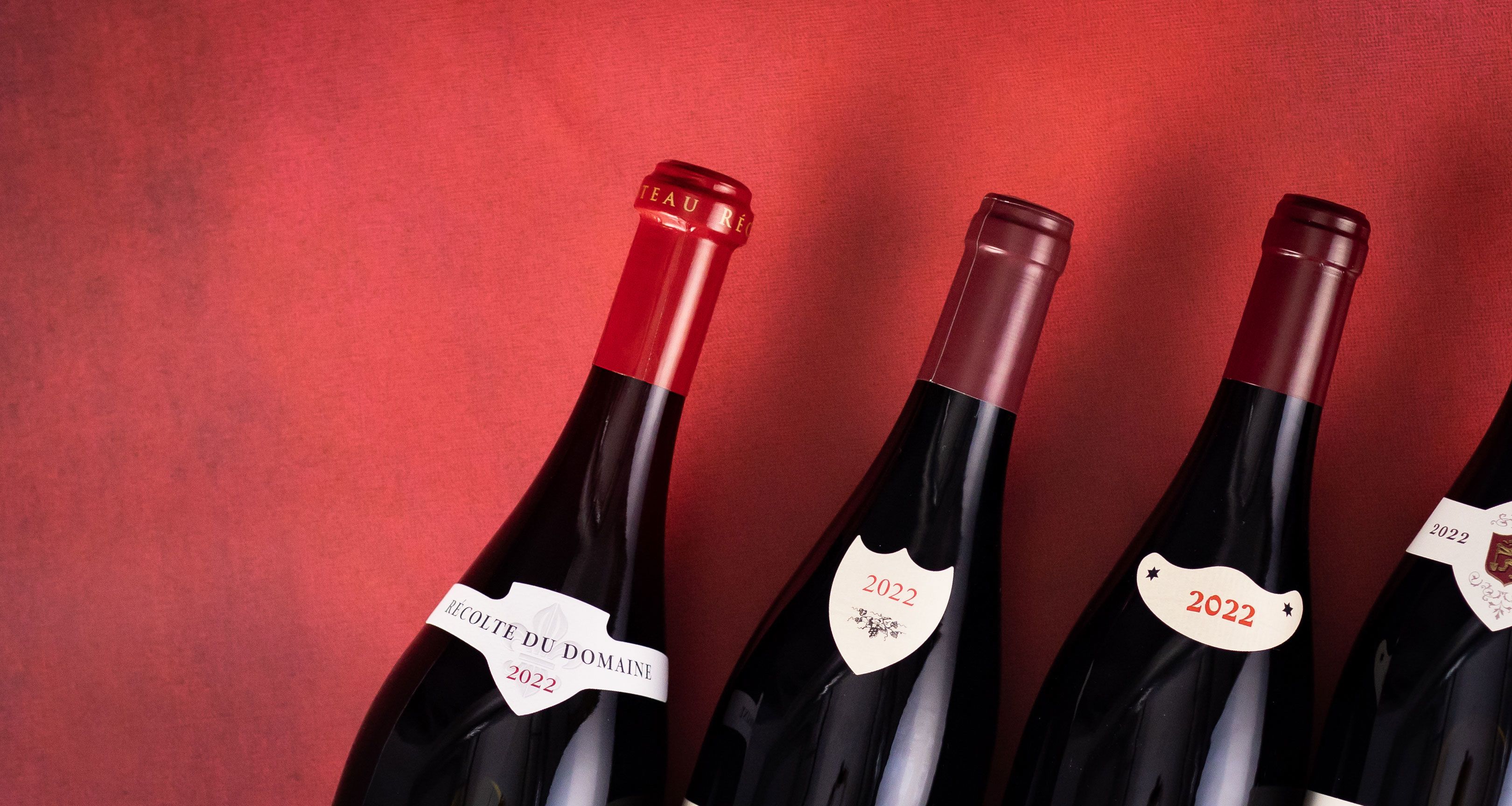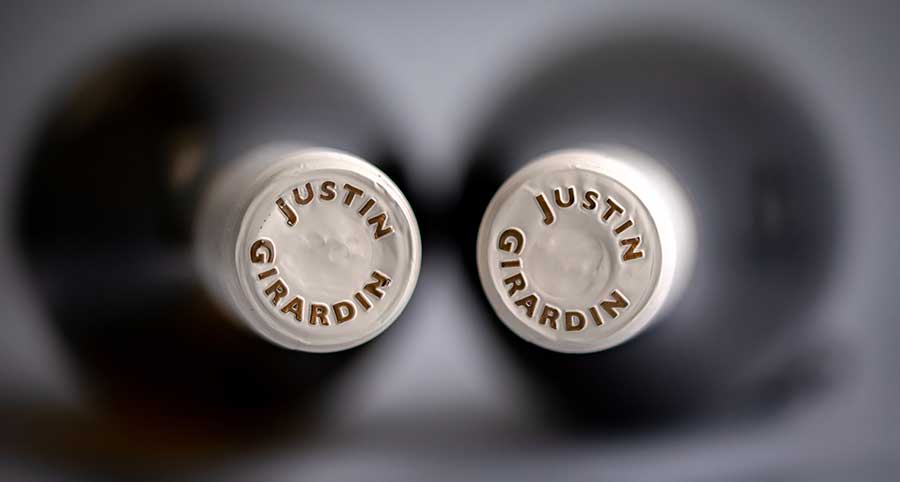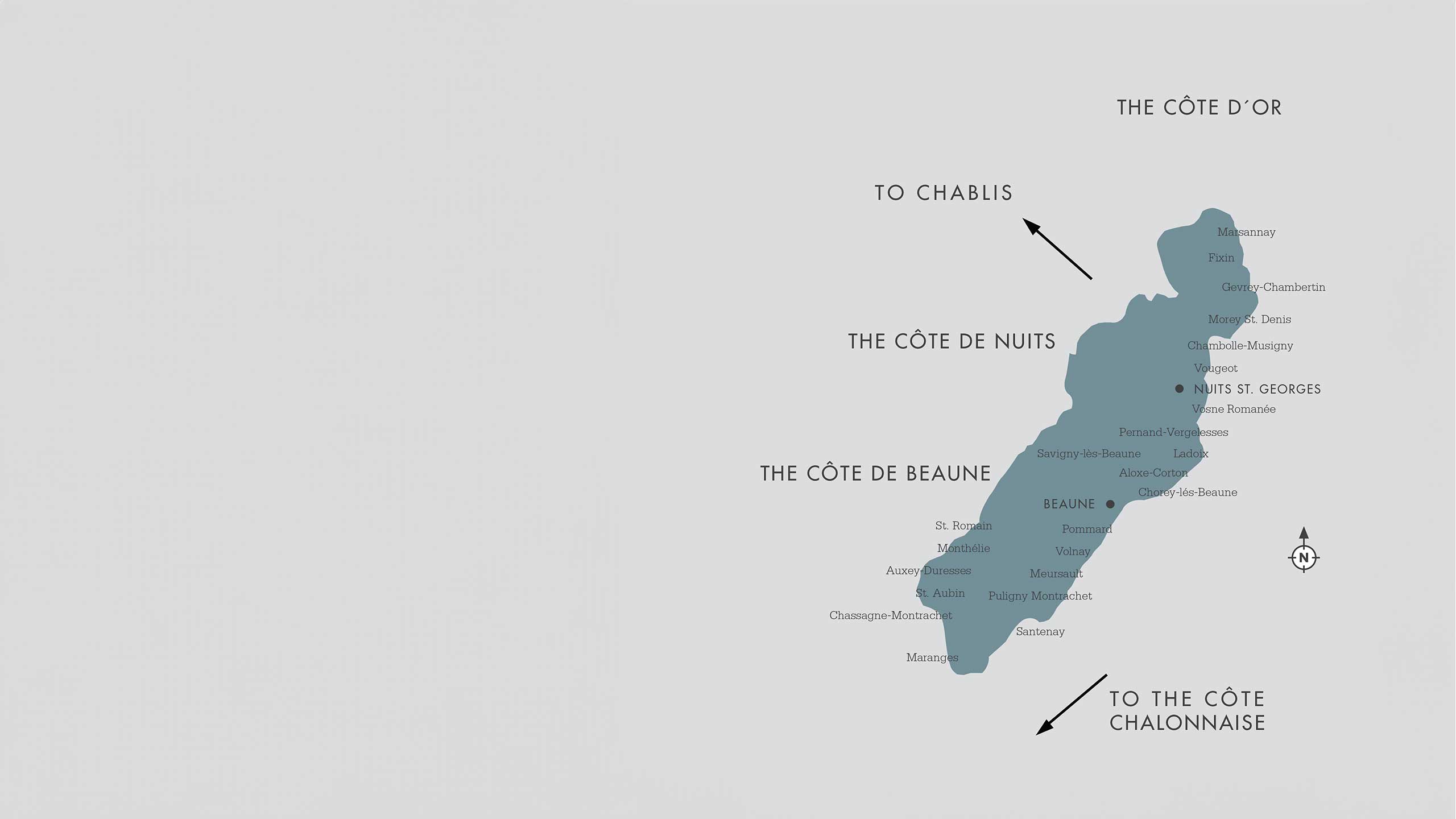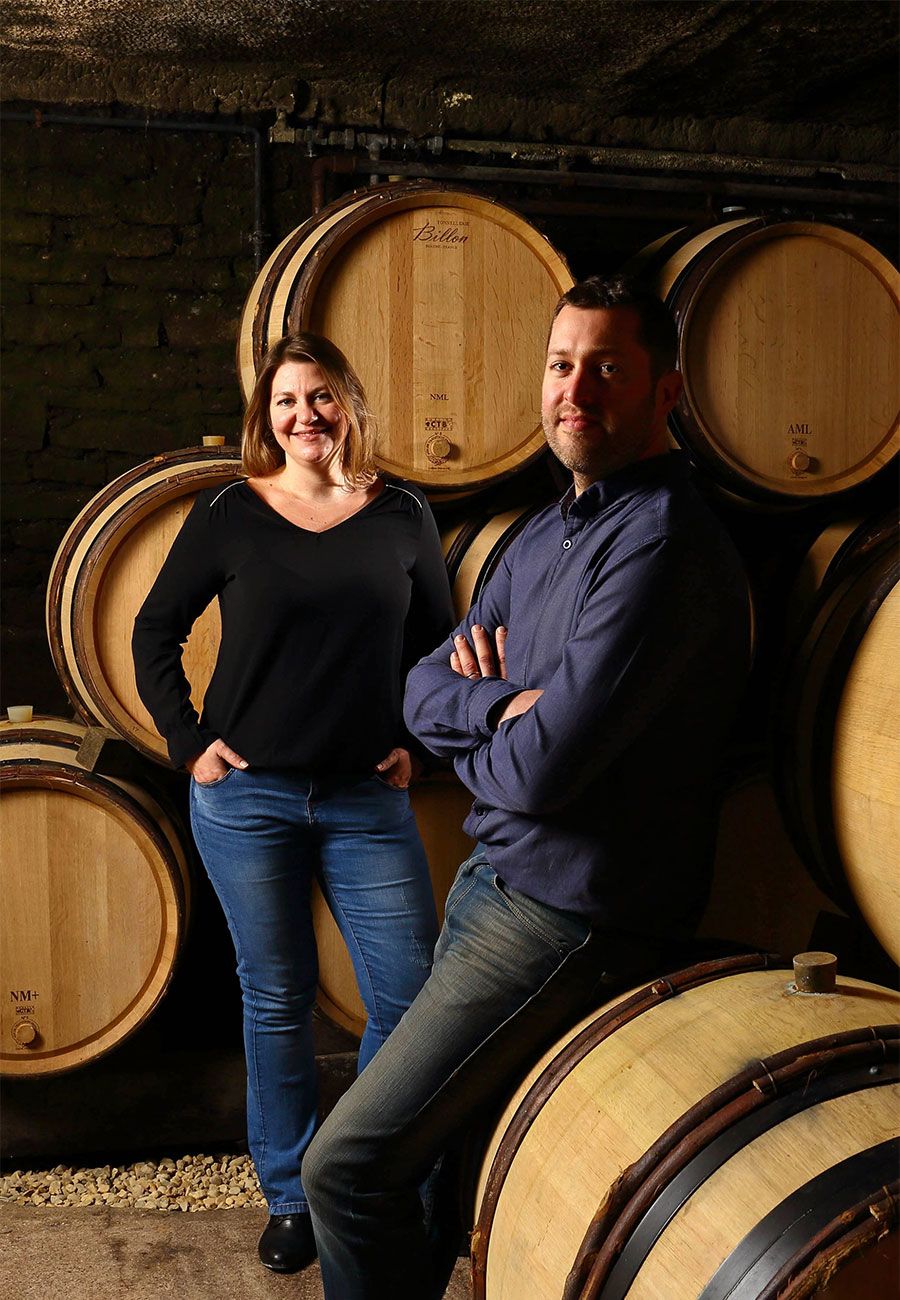Burgundy En Primeur 2022
welcome to our new Burgundy En Primeur Brochure. Here you can find full Goedhuis Waddesdon tasting notes for all our growers, alongside our usual deep dive into the vintage following three intensive weeks of tasting in Burgundy in autumn 2023. Read on to discover David Roberts MW's in depth vintage report and overview of the region's developments, and click the icons below to explore our growers from across Burgundy's core three appellations; Chablis, Cote de Beaune and Cote de Nuits.

Burgundy 2022 | What A Difference A Year Makes
Each autumn, our buying team make their annual pilgrimage to some of Burgundy’s most dynamic, quality focused producers, traversing the Côte d’Or in search of the best the vintage can offer. In 2022, what they found was exceptional; reds and whites alike are vibrant, silky and seductive, with reassuringly excellent quality across the board.
After the punishingly small volumes of 2021, every winemaker pointed happily to the barrels stacked high in the cellars, breathing a sigh of relief that, in this vintage, yields were back on track, and they were able to produce good quantities of wine. David Roberts MW, Goedhuis Waddesdon Burgundy & Bordeaux Buying Director dives into what defined 2022 in Burgundy, and what lies ahead for this exceptional region.
A JOYFUL VINTAGE TO PLEASE ALL PALATES
2022 in Burgundy has produced wonderfully elegant reds and whites, with a quality that shines through at all classification levels. Excitingly, after the stresses of the 2021 harvest, we have seen a healthy crop and sensible volumes.
The red wines exude noticeable charm and appeal; polished is a recurring theme in my tasting notes. The fruit characters are quintessentially Pinot, with seductive aromatics, and silkier tannins than we have seen in the past few vintages. The ripe fruit profile reveals the warmth of the year, but luckily this is not reflected in the alcohol levels, which maintain a classical average between 13% and 13.5%. While acidity isn’t high, the wines impress with rewarding, mouth-watering freshness, giving both lift and energy. They embody the modern ethos of Burgundy’s winemakers: respecting traditional values to secure ageing potential whilst ensuring additional appeal for lovely early drinking.
The 2022 whites in the Côte d’Or and Chablis command immense respect, delivering everything we could wish for. Abundant fruit showcases a careful expression of the warmer nature of the year. The acidity levels, though lower than in 2021, maintain a lively poised freshness. These characteristics are held together harmoniously by carefully balanced alcohol levels, hovering around 13%.

HEALTHY YIELDS
2021 in Burgundy witnessed one of the smallest harvests in a century. Many appellations revealed growers losing up to 85% of their crop due to devastating spring frosts. 2022 marks a welcome return to the new normal. While not a bumper crop, yields at the 10-year average of 40-45 hl/ha provide a welcome relief. Cellars can be replenished with a quality level that meets our sky-high expectations.
PRICE STABILITY
2022 is noteworthy as the first vintage in years where we have seen price stability for most wines. With the benefit of a healthy harvest at desired volume levels, growers have adopted a responsible pricing view. In general, prices remain consistent with 2021, and, where increases occur, they are marginal, varying from cuvée to cuvée and domaine to domaine.

THE VINTAGE IN A NUTSHELL
- Some very cold nights below zero in January and February were followed by a milder, drier winter than average.
- Four nights of frost between 3rd and 11th April sent shivers down growers' spines. Thankfully the vines were at the early bud break stage and, barring a few exceptions, were not impacted.
- Mid-April saw spring-like conditions and the rapid onset of the leaf canopy.
- Perfect warm dry conditions marked the start of flowering on 20th May, two weeks ahead of a normal year, indicating an early and good harvest.
- A hot and dry summer saw crucial rainfall between 21st and 25th June. This provided essential additional water reserves, protecting the vines from the risk of hydric stress and any potential interruption in their vegetative development.
- Despite being the second hottest year since 1947, significantly, 2022s cold nights preserved grape acidity and vitality.
- An early and rapid harvest, subject to domaine and location, took place between 25th August and 15th September in ideal conditions.
- Yields, as described by Geraldine Godot of Domaine de L’Arlot, saw "unhoped for volumes" at a 10-year average of around 40-45 hl/hectare.
- Uniform quality at all levels, displaying fine terroir identity and accurately representing the vineyard classification system.
- A vintage suitable for early drinking, with the substance and stature for ageing, with both red and white wines excelling.
A BIRD’S EYE VIEW OF BURGUNDY TODAY



One of the secrets to Burgundy’s success lies in balancing respect for tradition alongside a healthy appetite for progress and development.
The world of wine is ever-changing; each generation tackles new challenges, far removed from those faced by ancestors. Today’s worries; a lack of water, too hot a summer, a harvest in 5 days, a shortage of pickers; would be unimaginable to past generations.
The 21st century is an exciting time for the wines of Burgundy, with a unique culture where two and sometimes three generations of a family work together. Burgundians are men and women of the soil, custodians of its extraordinary patchwork quilt of vineyards, classified and designated by Cistercian monks and their predecessors.
EVOLVING CHALLENGES
Today’s requirements differ from those of the past. The devastation of phylloxera and decimated yields from unripe or rotten vintages have been consigned to the annals of history, the latter a side effect of an ever-warming climate. Producers and consumers alike have reaped the rewards with the creation of exceptional wines in recent years.
This sensitivity to climate has caused the growers to evolve their wine production into a process that reveres every element, from the land, soil, tradition, and vinification, all the way to the end consumer. Seasonal changes have brought about shorter and milder winters, marking the end of a vine's traditional long repose. Today's concerns focus on the threats of water scarcity, flash floods, hail, frost, and extreme temperatures.
THE GROWTH OF ORGANIC
Among the foremost challenges for the new generation is the conscientious management of their land and sensitivity to the environment. Two decades ago, terms like biodynamic and organic were met with suspicion. Today, they are increasingly the norm, and whether certified or not, all our growers are meticulous in managing their land and soils. Vine growing, being a monoculture, necessitates careful soil management. Grass, herbs, and cover crops between rows are not signs of a lazy vigneron but of a respectful and attentive approach. This practice not only replenishes the soil but also safeguards against erosion, reduces vigour in years of abundance, and arguably provides some frost protection.
IN THE VINEYARD
Vineyard planting and work are undergoing rapid transformations. Traditionally, Côte d’Or vineyards were planted 1m by 1m (10,000 vines per hectare), but growers like Olivier Lamy are eager to push boundaries, recognizing the benefits of more intense planting (20-30,000 vines), forcing the vine to build strength and develop taper roots further down into the bedrock. Traditional pruning and training practices are being challenged; Morgan Truchetet, a representative of the new generation, is committed to converting his Côte de Nuits estate to higher training, following the lead of Lalou Bize Leroy. This encourages upward growth, improved air flow, and more efficient photosynthesis. Similarly, almost all growers, where size allows, are delaying pruning until after Christmas to defer budding (protecting against frost) and consequently, flowering and potential harvest dates.
IN THE WINERY
In the winery, fruit ripeness is far less of a concern than in the past. At the domaines we work with, the fruit quality arriving at the cuverie is approaching perfection. This is thanks to meticulous selection processes and sorting tables, when required (although these were notably absent in 2022 due to the purity and cleanliness of the fruit). Vinification today revolves around nurture, enhancing what nature has provided and respecting a vintage's identity.
TO DESTEM OR NOT TO DESTEM
Fruit quality is arguably at its purest in the history of wine; ripeness levels of the skins, pips, and stalks (anthocyanins) are almost guaranteed today. Winemaking has transitioned into a process of aiding rather than influencing. The decision of whether to destalk the fruit before fermentation or to vinify with whole bunches is more of a personal choice. The nuanced scent and texture from whole clusters can be delightful, enhancing certain terroirs but potentially restricting others. With the quality of today’s destalkers, it is also easy to see why many growers believe vinifying without whole bunches gives such beautiful precision and clarity of fruit flavours and a more classical terroir identity.
GENTLY DOES IT
Infusion rather than extraction is now standard practice. Careful fruit handling with gentle pump-overs for the reds and lower fermentation temperatures are common. Similarly, the type and style of vessel for ageing wine are hot topics. Innovations like Mathias Gros' introduction of small cement eggs, the size of a cask, to reduce the impact of wood in 30% of each of his cuvées, or Antoine Jobard's shift from the traditional 228-litre cask to larger 400-litre casks for all his wines in the future, contribute to shaping the quality of the 2022 vintage.
All these factors have collectively played an integral role in the production of wines that are unabashed in their suave sophistication.
A LOOK TO THE FUTURE
ADAPT & OVERCOME
The 2022 vintage shows the future is bright for Burgundy. Contrary to concerns about the future of Pinot Noir and Chardonnay due to temperature changes, the vines show resilience and adaptability. Vines are extraordinary things, and it is clear these two varieties are adjusting to cope. Rather than thicker skins, more powerful wines, soaring alcohol levels, and declining acidity, they adjust in their vegetative cycle to cope with today’s weather variations. Clones and rootstocks with the ability to cope with changing conditions are also likely to emerge.
CLOSING THE QUALITY GAP
While the greatest terroirs, especially the Grands Crus, will always stand out, the historical quality gap between the very best and some of the lower appellations is narrowing. As noted by Franҫois Legros in Nuits St Georges, some poorly drained soils on the plains can sometimes cope better than the traditionally esteemed slopes in drier conditions. Another Nuits St Georges grower, Geraldine Godot from Domaine de l’Arlot, muses that whilst the quality of individual terroirs will never change, the differences from one village to another may be accentuated. For example, in Premeaux-Prissey the daily sunshine, temperature and rainfall are lower than in Gevrey Chambertin and this will become increasingly apparent going forward. Bruno Colin observed how his oldest vines are becoming the most drought-resistant, with their extraordinarily deep roots enabling absorption of water and nutrients from the bedrock.
CONCLUSION
There is much to be excited about in Burgundy. The best wines remain extraordinary, but this is also a time to be adventurous, and we believe our offers in recent years reflect this. Seeking out wines from appellations like Marsannay, Mercurey, Maranges, Santenay, and the higher slopes of the Hautes Cotes is no longer a risk but an astute strategy for finding wines with an amazing price-quality ratio.
This is our largest offer ever and a showcase for Burgundy, as is the 2022 vintage. I hope you enjoy it.

VIEWS FROM THE VINEYARD

- Cyril Audoin’s father, with a wistful smile: “If 2022 was made in the 1960s, it would have been the vintage of the century for sure. Remember, we were lucky then to get one good year in ten back then!"
- Eric Pignal at Domaine Bize: "The red wines have an extraordinary backbone this vintage."
- Pierre Emmanuel at Domaine Patrick Javillier: “My father-in-law always started harvesting end of September and occasionally in October; in seven of the last twelve vintages at the domaine, he has started in August!”
- Etienne Grivot: “While 2022 was a warm and dry year, the vines showed no sign of stress, so we could keep the grapes on the vines longer and harvest later than we expected, starting on 10th September.”

